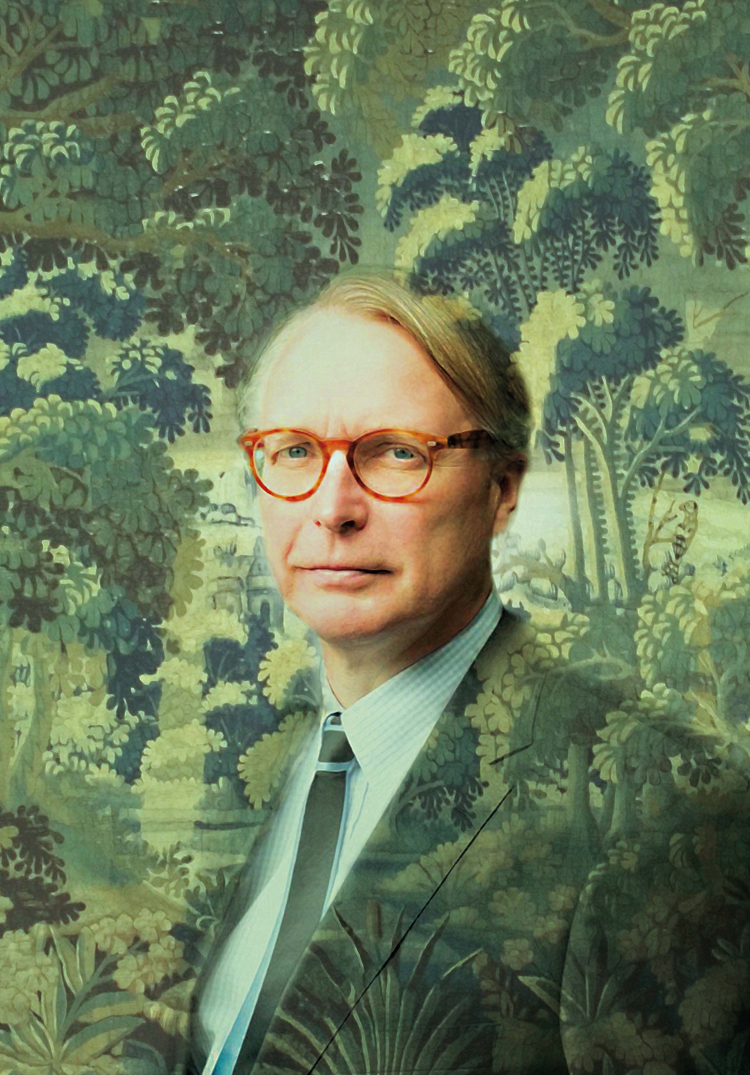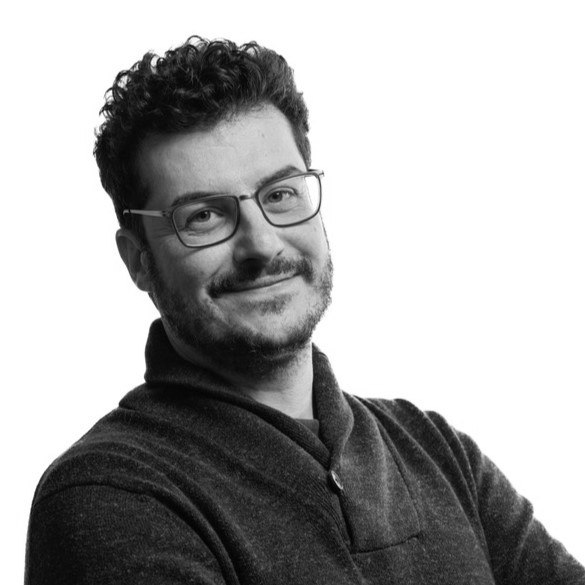
Few have applied integrated thinking and cross-disciplinary approach to environmental studies as Carl Folke. Author of 12 books and over 200 scientific papers, including 15 in Science and Nature, he is considered among the 10 most cited scientists worldwide in the area of Environment/Ecology and serves as Editor in Chief of Ecology and Society.
Renewable Matter has joined him in his Stockholm studio to understand the deep interconnection between humans, biosphere systems, resilience, art and science.
The Earth in the last 11,000 years humanity has seen an unusual stable phase. This has allowed us to thrive. But now we are the ones destabilizing it. What could happen if we moved out of this stable phase?
“We have at least reached a level of activity, which is quite impressive for single species of more than seven billion beings (probably around 9 or 10 by 2050), living in a globalized society. We are really pushing the envelope for our own future on Earth. Of course earth will always continue to have evolution of its organism as long as the sun is where it is, in the biosphere there, but the question is, whether we’ll be around or not, and it is up to us to some extent. It’s been an exception in the climate history of the Earth, many people think it can continue for a very long time provided we don’t push it too hard, unless we start to shuffle around with the basic operations of the earth system.”
Which is the weakest link on earth for the stability of our Planet?
“We have a portfolio of sensible elements. So if we simplify the whole surface of the Earth into big mono-country I’d say that the food production system that we have, has taken away a lot of the capacity to adapt to unexpected changes. During these 11,000 years, food production has been supported by fairly stable climate, we have been able to predict rain year by year. We had a fine-tuned system of crops that we sell on the global market. And we simplify the whole ecosystem so it became more vulnerable to changes, has less resilience.
Understanding transformation and how to become resilient to it implies analyzing complicated interactions between human economy, biosphere, climate, water system, and culture system.”
How do you model those interactions?
“I think it is still in the very explorative phase to combine these different domains. Of course a lot of progress has been made, in many fields, but combining them it is difficult. I think we are doing something similar to what medicine has done before. If you go back a couple of decades, people were only specialised in some diseases. Today we look at the body as an integrated system, we have much more interdisciplinary perspective on these things than we had during the last hundred years.
Understanding all the interconnections is almost impossible. What we should do is find the ways that we shouldn’t go, pathways of development that actually are not very sustainable.”
Is the scientific community working in a multidisciplinary fashion to solve these issues?
“In my perspective there are a lot of good scientist and research teams that are doing that. But I think the university system is not really adapting fast enough to these changes, actually. It is the same in Italy, it has been divided up in social sciences, humanities and natural sciences. We have to fix this.”
We should be more like 17th century scientists, when specialization was rare, while scientists tend to have an holistic approach to reality?
“Exactly. We are moving in that direction so probably in a few decades it will be very obvious. The scale of humanity today is global. And we need to understand any sort of connection. I don’t think you can find any spot on earth, which is not connected in one way or the other. And the next element is the speed of transformation; it’s a new type of speed that has not been there before. The last point is really on how the speed of connectivity makes things go tremendously fast and it would be good to use that capacity that we have developed to be able to redirect our future to much more sustainable pathways fast.”
So resilience also means acknowledging this speed and this interaction in order to react. Can you tell me your definition of resilience?
“We look at resilience as basically how you can sustain change, how can you continue to develop with change, if you are on the pathways where you’d like to be you try to adapt with change. But if you are in a bad path, you try to shift direction and create a new development path: that’s what we call transformations. So to us resilience is really a ‘forward looking’ concept. You have to have capacities: whether it is knowledge, is money, culture, tradition or whatever. It allows you to create new things or to innovate. Because you can’t just innovate out of nothing, you have to have a legacy or different legacies that you can combine for innovations. That’s the core of resilience: persisting, adapting and transforming. In the scientific community, if we want to live up to 9, 10 billion people on earth sustainably we have to transform our current pathways into more sustainable ones and those have to collaborate with the planet we are living on, we have to integrate economic development, social, with the capacity of the biosphere to sustain us.”
So, if a government approaches you for advice and asks you what steps should be undertaken to make the State more resilient what would you tell them?
“Try to make these integrations in any policy, relating the economics, the social and the biosphere. Second: put up institutions and structures that can create innovations for resilience. Third: we are finally coming along in the energy sector, there’s a lot of green energy coming up. Countries are starting to phase out fossil based sources for more green ones. For example, when I was a kid in Stockholm all the houses were heated by oil tanks that people had in their basement. And now there are no oil tanks around, people use geothermal energy or wind energy or sun energy. That’s a shift that has been happening in my lifetime. These types of shift are all happening and I think we are right now in a sort of new Renaissance or a new Enlightenment era, when we are starting to re-connect to the planet we are living on.”
What should a private company instead do to embed resilience in its long-term development strategy?
“I think that for many companies now it is becoming a real strategic issue. Someone in business once said: ‘you can’t do good business on a dead planet’, but I think this has to do with keeping your options alive and if you are in business you have to have flexibility to respond to changing circumstances, be them financial crash, shifting government, etc. And for that you need resilience, the capacity to live within changes. When it comes to the planet, a lot of companies, especially the larger ones, are really deeply realizing that this is not just CSR marketing but a strong conviction that we can’t continue to have a prosperity on earth, unless we collaborate with the planet we are part of.
Our study on marine company globally shows that only 20% works to reduce environmental risks. When you lose really interest in sustainable production. Especially those engaged with aquaculture, how can they contribute to prosperity for humanity on the longer run? But I am positive: we are starting to see growing awareness and engagement by companies, that wasn’t present before. All this did not exist 30 years ago, it would have been costly to clean the emissions. It’s not even a mind shift, it’s deeper: for many people we can’t go on like this.”
One of the key issues with resilience is communicating the importance of resilience thinking…
“Resilience requires complexity thinking and especially complicate adaptive system, which can involve science from physics to archeology. To understand this complexity you can’t use only rational efficient thinking but you need to activate the other side of the brain, which is connected with intuition. We need a lot of work on exhibitions with creative artists from films to paintings and installations and journalism, things get people to be reconnected to the planet we are living on actually.”
Do you think art and storytelling can achieve that?
“I think it is part of this long-term change process that we are in right now. This interview is an example of it: that you asked about resilience, an example of this transformational process that is happening right now.”
So you are positive about this transformation, do you think that this Renaissance is happening and will happen throughout the world?
“If I were not positive it would not be so nice to be here actually. You can easily dig yourself down into depressive things. But I believe we can mobilize our intuitive and collaborative capacity and create new paths with development and benefit for many people as possible on earth.”
You work inside the Resilience Alliance: what’s the goal of this group?
“We want to raise our understanding of the interactions between people and the environment. There are about 20 research teams involved, research networks that were set up about 20 years ago. Resilience is not something that has been invented theoretically but it has derived from observation of how the world works, which is very important to communicate because many people think it’s a theoretical concept but it’s actually an interpretation of how in reality the world works.”
Royal Swedish Academy of Sciences, www.kva.se/en
Stockholm Resilience Centre, www.stockholmresilience.org
Beijer Institute of Ecological Economics, www.beijer.kva.se
Resilience Alliance, www.resalliance.org



